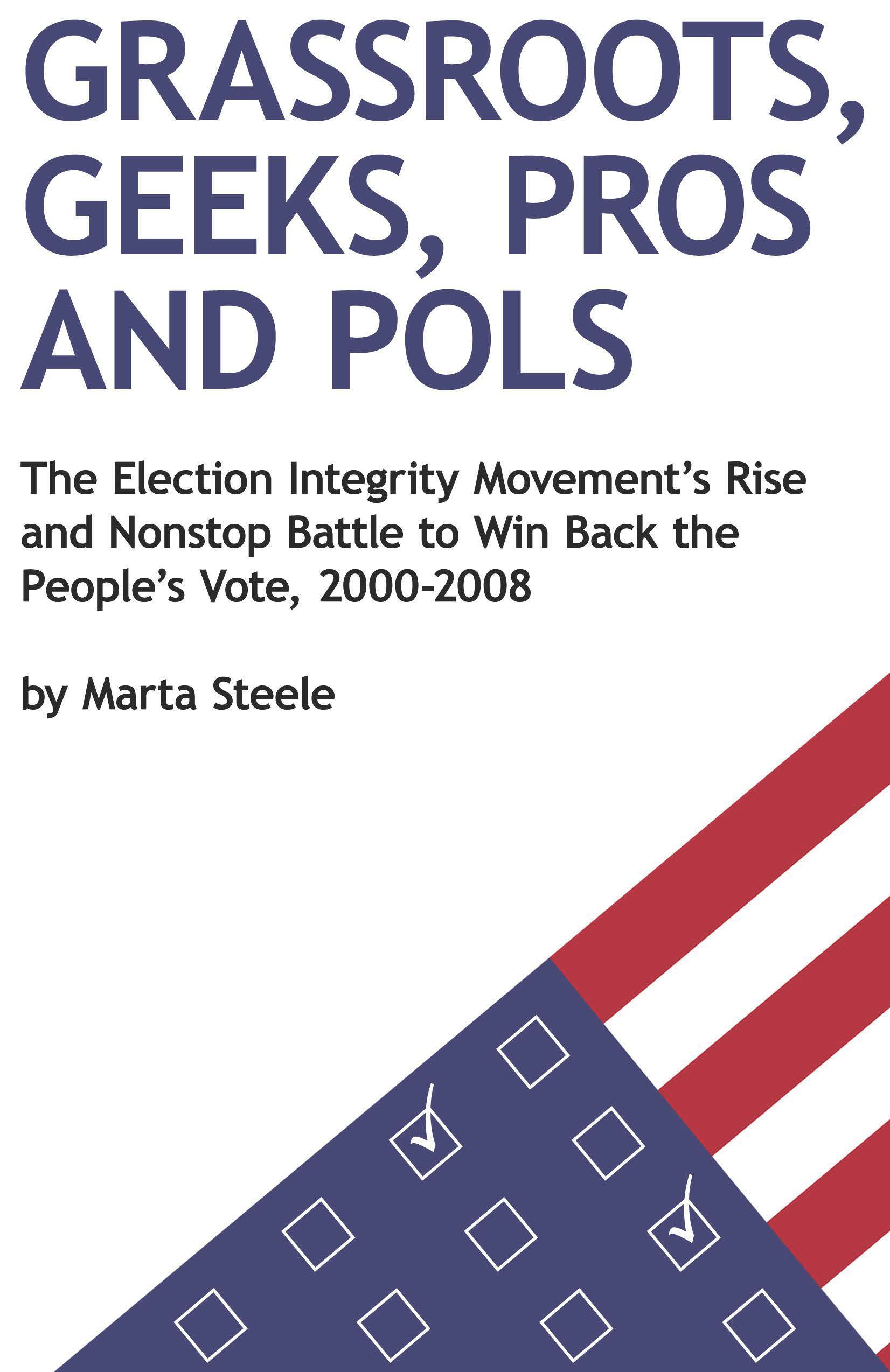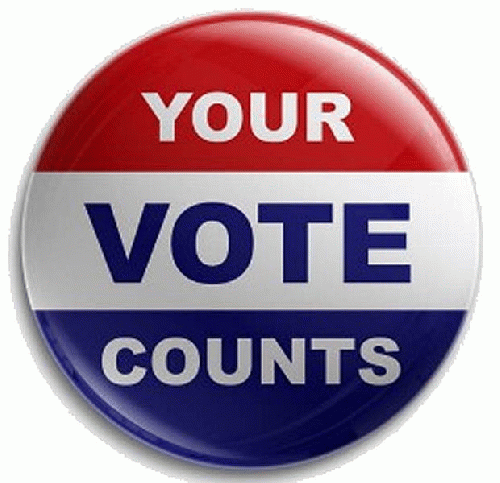Coming upon the above information, that voter IDs as part of the suffrage experience have been around since 1970, was a surprise. I am including below a draft from chapter 1 of my forthcoming book, Ballots or Bill$: The Future of Democracy? Or, Why Does Evil Genius Always Win?
Continental Europe, the UK [i], and other democratic countries throughout the world must look askance at the United States where certain states to this day do not require ID at the polls. Most of these countries' governments issue national IDs used for various purposes including voting. [ii],[iii]
But this form of the idea did not spread to the United States. The voter ID requirement here, first only requested, and then, when required, allowing many different non-photo or photo forms, evolved from there to a very different purpose--to eliminate Democratic voters, who comprise the expanding majority of qualified voters. [iv] The huge majority of those favoring this device are Republicans; witness the first two states to require the strictest form of photo ID, the red states Georgia and Indiana. [v] According to Lorraine Minnite, except in two states, Louisiana and Washington state, the stringent requirement was "enacted only when Republicans achieved unified control over state government."[vi] Devices toward keeping Democrats from voting are numerous and varied but, for the time frame this book covers, voter ID tops them all in terms of the challenge it poses to U.S. democracy and its institutions and governing documents. [vii]
To sum up a sinuous saga in a few words, justification for voter ID rests on the premise that it prevents voter fraud--a specific form of it anyway, in-person impersonation of one voter by another. Study after study has proved that this event is virtually nonexistent. [viii] You are more likely to be struck by lightning than to commit this category of voter fraud, according to research by the Brennan Center for Justice. [ix]
Beginning in 1950 [underlining mine] with South Carolina, five states initiated the necessity for identification at the polls, with or without a photograph. In most cases those lacking ID were allowed to vote if they signed an affidavit swearing that they were who they claimed to be, which had to be confirmed by other voters who knew them. Hawaii, decidedly a blue state, followed South Carolina in 1970, the first state said to have required a photo ID [x]; Texas followed in 1971; then, ironically, progressive Ruben Askew's Florida in 1977; Alaska in 1980; and New Hampshire in 1988. By 2000, fourteen states comprised this group--including Arkansas, Georgia, Michigan, and North Dakota--only four of which requested photo-based identification and all of which again permitted voters lacking IDs to sign an affidavit swearing that they were who they claimed to be, which in some states had also to include confirmation by other voters who knew them. [xi],[xii], [xiii]
Late in 2002, with the passage of the Help America Vote Act (HAVA), an attempt to provide more uniform and up-to-date voting standards throughout the country, the vote-by-mail (VBM) ID requirement, for first-time voters, was codified for the first time as not requiring but accepting a valid, current photo ID or instead, far more accessible documents such as a "utility bill, bank statement, government check, paycheck, or other government document that shows the name and address of the voter."[xiv] Without these documents, the voter must proceed with a provisional ballot. [xv]
HAVA's influence was apparent in 2004, when Arizona attempted a dual voter ID requirement. [xvi] Potential voters were to present proof of citizenship to register and then a photo ID to receive a ballot at the polls. Proposition 200, as the relevant regulation, voted in by the public, was called, did not become an issue until the next federal election, in 2006, when actual implementation caused problems. Opponents to the measure claimed that it violated the Equal Protection clause of the Fourteenth Amendment in that it had the potential to discriminate against ethnic groups.
A month before Election Day 2006, the two requirements were suspended by the U.S. Court of Appeals for the Ninth Circuit, but then, after another two weeks, the U.S. Supreme Court reinstated them. [xvii] Litigation continued through 2013, when a Supreme Court decision of 7-2 eliminated the registration requirement of proof of citizenship in federal elections, finding it incompatible with the 1993 National Voter Registration Act (NVRA). Where a federal election is concerned, federal law trumps state law. [xviii] But, as of 2014, litigation favoring the proof of citizenship requirement continues for state and municipality-based elections in Kansas and Arizona, because of the influx of immigrants from Mexico and through Mexico from farther south.
The first government-issued photo ID requirement in Indiana became law in 2005, taking its cue from a recommendation issued by the Carter-Baker [nonpartisan] Commission in 2005. [xix],[xx] This more stringent requirement had appeared earlier that year in Georgia. [xxi] The Indiana requirement was challenged all the way up to the U.S. Supreme Court in 2008, which returned the verdict that the voter ID requirement is constitutional. [xxii] Both states' relevant laws were activated and became operative. [xxiii]
As discussed in Chapter 2, two justices, one at the district court level and the other a SCOTUS Justice, had second thoughts about their decisions in favor of the measure. [xxiv] Even after the April 28, 2008, Supreme Court decision, the voter ID law was once again challenged that same year by the League of Women Voters on June 20, and discord persists to this day. [xxv]
. . .
All told, between the passage of HAVA in 2002 and the election of Barack Obama in 2008, the number of states requiring voter ID shot up to 24. Besides Indiana, Georgia, and Arizona's attempt, others joining this group were Alabama [xxx], Colorado, Michigan, Montana, New Mexico, North Dakota, Ohio, South Dakota, and Washington state. Three other states among the first group "tightened" their requirements: Florida, Georgia, and Missouri. [xxxi] Lorraine Minnite writes that HAVA's seemingly buried and minimal ID requirement for first-time voters by mail was specified as not meant to limit lower-level governmental units from establishing additional, stricter administrative and technological provisions as officials saw fit,[xxxii] and that they did--their first target voter ID before they turned to limitations on early voting, same-day registration and, with these, other forms of partisan, self-serving finagling that will be highlighted below. [xxxiii]
But according to the Brennan Center, "between 2006 and 2011 no state passed a photo ID [underlining mine] law."[xxxiv] Between 2002 and 2009, in some states other categories of voter ID did not become law because it was blocked by state legislatures. Most notoriously, perhaps, in Wisconsin then state legislator Scott Walker (governor since 2010) first made this a project in 2002. It was vetoed three times between then and 2005 by the governor, Jim Doyle, a Democrat. The similar law in Kansas was vetoed in 2008 by its Democratic governor, Kathleen Sebelius. Other states with similar scenarios were Texas, Tennessee, Mississippi, Alabama, and Rhode Island.
But between the January 2010 SCOTUS rulings on Citizens United v FEC and SpeechNow.org v FEC (see above, Chapter 2, on these) and the strong ideological influence wielded by the Tea Party, as well as dissatisfaction with the Affordable Care Act, the economy, and other lower-profile accomplishments of the Obama administration, Election 2010 handed the House of Representatives over to the Republicans, who also gained several seats in the Senate (see Chapter 2 above and Chapter 5 below). The GOP also made sizeable gains among state legislatures--domination over twelve new states, for a total of 26 states to Democrats' 17, with five legislatures split--and governors--12 new Republicans now occupied the capital mansions so that the GOP was in full command over 21 states, compared to the Democrats' 11. [xxxv]
It was therefore no coincidence that in 2011 a large swath of states either passed for the first time or tightened already-extant voter ID legislation. In 2011, at least 34 state legislatures considered the photo voter ID requirement. . . .
(Note: You can view every article as one long page if you sign up as an Advocate Member, or higher).






